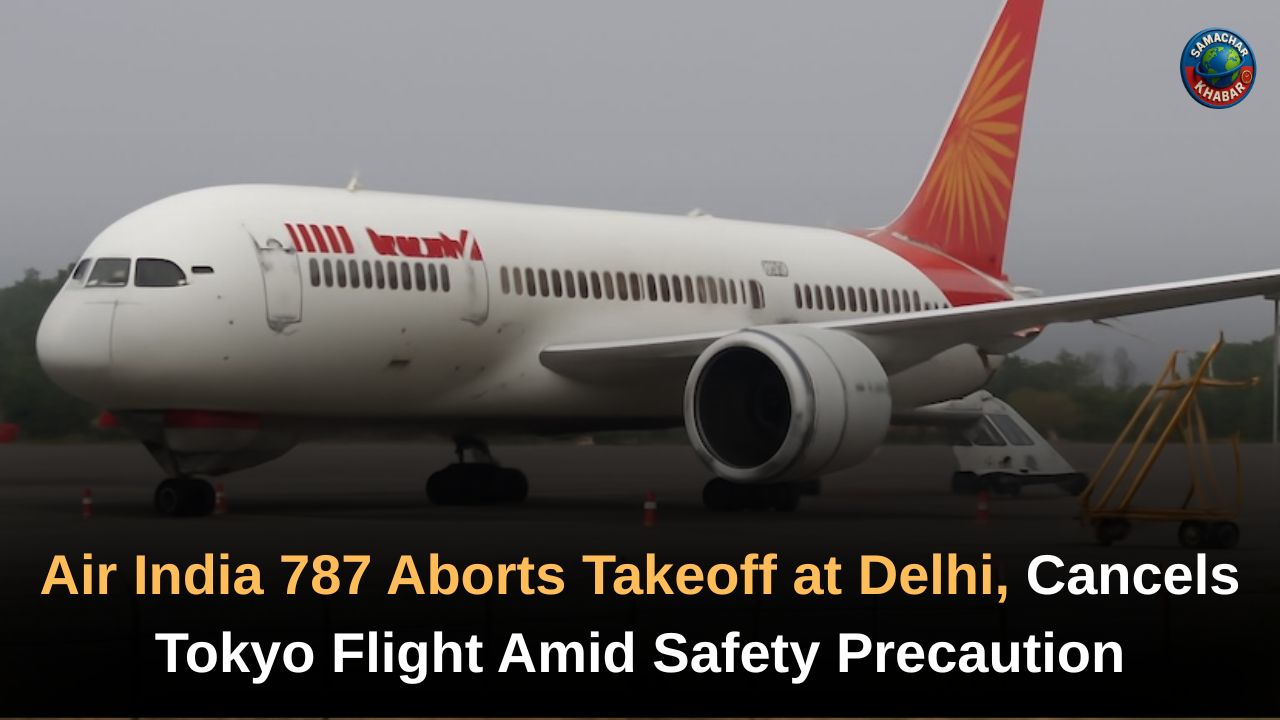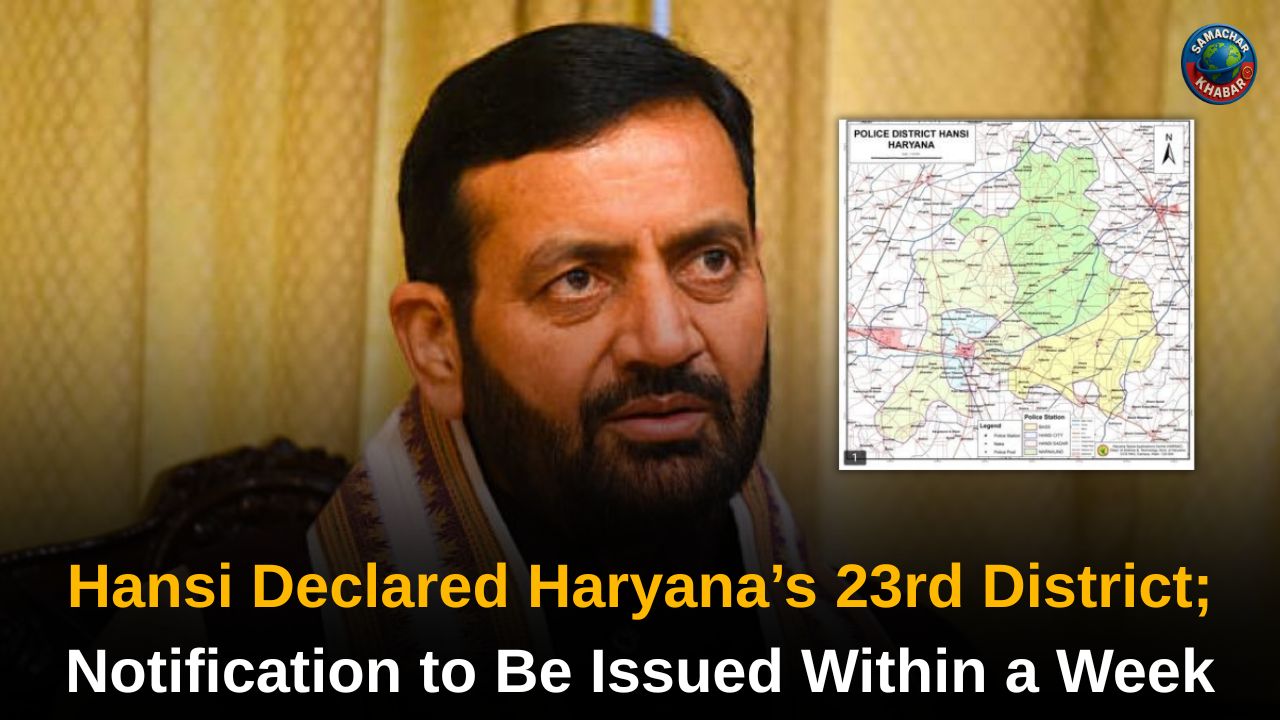Air India 787 Aborts Takeoff at Delhi: Air India’s Delhi–Tokyo Haneda flight AI358 was cancelled on November 24, 2025, after the Boeing 787 Dreamliner’s pilots rejected the takeoff roll at Indira Gandhi International Airport due to a suspected technical precaution. The aircraft returned safely to the parking bay, and the airline followed strict operational protocols while assessing the situation.
Although an alternate aircraft was arranged, the crew reached their Flight Duty Time Limitations (FDTL), making the operation non-compliant with regulations. Passengers were provided hotel accommodation, refunds, and rebooking options as Air India prioritized safety and minimized disruption.
Key Takeaways on Air India Delhi–Tokyo Flight Cancellation
- Air India’s Boeing 787 operating flight AI358 aborted takeoff at Delhi due to a suspected technical issue.
- The crew followed all established safety and operational protocols before returning the aircraft to the bay.
- FDTL limits prevented the standby aircraft from operating the flight, leading to complete cancellation.
- Air India offered hotel stays, full refunds, and free rebooking on the earliest available flights.
- DGCA issued a parallel volcanic ash advisory for Indian airlines due to the Hayli Gubbi eruption in Ethiopia.
- Airlines were instructed to avoid affected regions, revise flight plans, and follow ash-encounter manuals.
Why Air India Pilots Halted the Takeoff at Delhi Airport
The pilots of Air India flight AI358 were conducting the takeoff roll toward Tokyo Haneda when a technical precaution signaled the need to reject the takeoff. In line with strict safety norms, the Boeing 787 Dreamliner was brought to a controlled halt, after which the aircraft taxied back to its parking stand.
The precautionary action underscored the aviation principle that any anomaly—no matter how minor—must be assessed before continuing flight operations. Air India reaffirmed that safety remains non-negotiable, especially during takeoff, one of the most critical phases of flight.
How Air India Assisted the Stranded Passengers
Upon cancellation, the airline’s ground team at Delhi Airport immediately began supporting affected travelers. Passengers were informed, briefed, and guided through the next steps.
Support Extended by Air India
- Hotel accommodation for passengers facing long delays
- Complimentary meals and assistance at the terminal
- Option for full refunds
- Option for free rescheduling to the next available flights
- Rebooking support for travelers connecting to Tokyo via other destinations
The airline emphasized that its priority was ensuring a smooth onward journey while minimizing inconvenience.
Understanding the Mandatory FDTL Restrictions
Even though Air India arranged an alternate aircraft, the assigned flight crew had reached their Flight Duty Time Limitations (FDTL). These duty-time rules are strict aviation regulations designed to prevent pilot fatigue.
Operating the flight beyond FDTL is legally prohibited and poses potential safety risks. Therefore, the flight had to be cancelled entirely, despite aircraft availability. This highlights the crucial role of operational compliance in global aviation.
DGCA’s Volcanic Ash Advisory on the Same Day
While the aircraft incident was unrelated, the Directorate General of Civil Aviation (DGCA) issued a separate advisory on November 24 regarding volcanic ash movement from Ethiopia’s Hayli Gubbi eruption.
The ash cloud drifted across parts of the Middle East, affecting routes through the Muscat FIR. The Toulouse Volcanic Ash Advisory Centre (VAAC) and Airports Authority of India had already issued a Volcanic Ash Advisory and an ASHTAM.
DGCA’s Instructions to All Indian Airlines
- Avoid regions and altitudes affected by ash
- Revise flight planning based on updated NOTAMs and weather forecasts
- Brief cockpit and cabin crews about ash-related hazards
- Conduct post-flight inspections for any aircraft operating over impacted corridors
- Monitor satellite data and VAAC bulletins continuously
Volcanic ash can severely affect engines, sensors, and visibility, making such advisories essential for safe air operations.
How Travelers Can Navigate Sudden Flight Disruptions
Flight cancellations, though stressful, are part of global air travel. Incidents such as technical alerts or natural hazards require quick adaptation.
Practical Advice for International Travelers
- Regularly check flight status through official channels
- Know passenger rights, including refunds, hotel stays, and alternative flights
- Keep travel plans flexible, especially during long international journeys
- Carry essential items—documents, medicines, valuables—in hand baggage
- Stay calm, as trained airline staff are equipped to manage such situations
Being prepared can significantly reduce the stress caused by unexpected schedule changes.
Delhi Airport’s Role in Supporting Affected International Travelers
Indira Gandhi International Airport is equipped with extensive facilities to assist passengers during disruptions. From transit lounges to medical care and customer service desks, the airport ensures that travelers remain comfortable and well-supported.
Coordination between Air India and airport authorities helped manage the cancellation smoothly. Amenities such as refreshments, guidance for rebooking, and transport links prevented discomfort for passengers awaiting their next flights.
Aviation’s Safety Commitment: What This Incident Reflects
Air India’s cancellation of flight AI358 is a reminder that precautionary decisions, though inconvenient, are central to aviation safety. A rejected takeoff is a carefully executed procedure designed to avoid risk. Combined with DGCA’s volcanic ash advisory, the day highlighted multiple operational challenges faced by airlines.
Passengers may experience delays, but such measures reflect the industry’s commitment to ensuring every flight departs under safe, regulated, and fully compliant conditions. With clear communication, timely assistance, and responsible decision-making, both Air India and Delhi Airport demonstrated a traveler-centric approach to managing unexpected disruptions.
FAQs on Air India 787 Takeoff Rejection at Delhi Airport
1. Why did Air India flight AI358 abort takeoff at Delhi?
Air India AI358 aborted takeoff due to a suspected technical precaution identified during the roll, following strict safety protocols to avoid operational risk.
2. Why was the Delhi–Tokyo flight cancelled after the rejected takeoff?
The flight was cancelled because the assigned crew reached mandatory FDTL limits, making it impossible to operate the service without violating aviation regulations.
3. What assistance did Air India provide to affected passengers?
Air India offered hotel accommodation, meals, full refunds, free rebooking, and on-ground support to ensure minimum discomfort and smooth onward travel.
4. What volcanic ash advisory did DGCA issue on the same day?
DGCA warned airlines about volcanic ash from Ethiopia’s Hayli Gubbi eruption, affecting Middle East routes, and instructed carriers to modify routes and follow ash-encounter procedures.
5. How should travelers handle sudden flight delays like this?
Travelers should monitor flight updates, know refund rights, keep essentials handy, stay flexible, and rely on airline staff trained to manage disruptions efficiently.

















